Atomic Career of TD Barnes
Accouterments of War and Defense
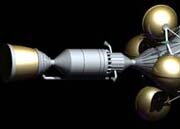
![]()
Nuclear Engine for Rocket Vehicle Application
Nuclear Rocket Development Station
Jackass Flats, Nevada
On the atomic side, I participated in the NERVA project to develop a nuclear engine for use in manned flight to Mars.
NASA’s Nuclear Engine for Rocket Vehicle Application (NERVA) program at the Nuclear Rocket Development Station (NRDS), Jackass Flats, Nevada was contracted by Pan American Airways to develop a nuclear Engine for future manned flight to Mars. This 1950 – 1960’s Kiwi nuclear reactor Program code-named” Project Rover,” consisted of test cells, A, C, and ETS-1 Engine Test Stand; R-MAD and E-MAD (Reactor and Engine Maintenance Assembly and Disassembly facilities; a Control Point/Technical Operations complex; an Administrative area; and a Radioactive material storage area. The three test cells were connected by a railroad where a remote-controlled locomotive transported the highly-radioactive reactor between the assembly complexes and the test stand. It was called the railroad “Jackass & Western Rail Line, the worlds shortest and slowest”.
While waiting for my Top Secret “Oxcart” security clearance for Area 51, I worked in Area 25, the largest section of NTS mostly composed of a shallow alluvial basin called Jackass Flats. I entered this portion of the Atomic Testing Grounds through a guard shack manned by armed Wackenhut guards a few miles east of Lathrop Wells, Nevada. The environment consisted of a flat basin between barren Yucca Mountain and the mesas of the Atomic Proving Grounds. The valley’s vegetation was mostly Joshua trees, and creosote bush.
The valley lacked much evidence of human activities other than the security check stations. Far in the distance I saw only minute outlines of the next closest building shimmering in the desert heat. I passed a support area and proceeded until I encountered a tee in the road, the road to my right heading towards a check station and eventual exit on Highway 95. I turned left where I passed through another Control Point in a maze of roads heading in three directions. The road to the right provided access to the R-Mad complex where it turned left to head towards test cell A and then branching to test cell C where it dead ended. Just prior to this test cell, the road looped back to the control point where it started. Heading left of the Control Point took me to another branch in the road, one taking me to the R-MAD and the other taking me to another branch where I turned right to the Engine Test Stand where I was assigned to work.
My first trip up, the Engine Test Stand One facility proved to be difficult to find. Probably due to security concerns, no map of the area was provided. I finally located a group of union workers, standing around a remote trailer house, who directed me to the facility. The road dead ended in a parking lot near the portal of an underground tunnel heading into the shallow hill where most of the test stand extended upwards. A secretary arriving in the parking lot guided me into the tunnel where we walked probably a quarter mile. The entrance to the tunnel could have been the entrance to any mine in the area from its appearance. Huge air pipes curved down from the hill and entered the tunnel where they ran along the top right side of the tunnel. Beneath the air duct pipes lay several layers of cable trays full of cables likewise extending into the tunnel.
The interior of the tunnel was concrete, brightly lit and very clean. Deep in the tunnel we encountered closed doors opening into brightly lit rooms occupied by desks for office workers. Closer to ground zero where the tunnel ended, we entered a large subterranean room stacked floor to ceiling with rows of electronic amplifiers, discriminator circuits, and multiplexing components. Almost each row of electronics contained an engineer or technician with a cart full of electronic test equipment calibrating and repairing electronic circuits.
The operation appeared low-key, but steady as everyone prepared for an upcoming nuclear reactor test run. Almost weekly, a test run occurred with simulators feeding expected data with which the personnel could evaluate and adjust their electronics.
Due to the temporary nature of my assignment to the NERVA project, I mostly accompanied Pan American managers as they conducted these tests and supervised the preparations. While I never actually had a job to do or any responsibilities, my go-as-you-wish privileges provided me a wider experience and broader knowledge of the program than most employees.
ETS-1 was a very impressive Cape Kennedy-type structure rising approximately 120 feet vertical where we ran the rocket engines. Huge spherical thermos-like dewar containing 260,000 gallons of liquid hydrogen added to the space launch appearance. We used the liquid hydrogen as a substitute for the rocket propellant. Large containers of water provided a cooling function during an actual engine run. Containment of this water, once exposed to the engine, was a critical concern to prevent the spread of radiation.
During a test, the nuclear rocket engine flame was invisible, however one could see a slight image of the exhaust due to incandescent impurities and heat aberrations being produced in the air. During a test the canyon was like an inferno as the hot hydrogen spontaneously ignited upon contact with air. The burning of the hydrogen formed water that we had to control to avoid radiation contamination.
We used a unique remotely controlled railroad car to carry the engine up to the ETS-1 and lift it into place on the test stand using hydraulic “hands”. After a test the railroad car carried the hot engine back to E-MAD where our high-level radioactive materials handling studies were carried out. We called the railroad the Jackass & Western Railroad.
The MAD buildings were constructed with thick concrete walls to protect us as we worked on the engine contained in immensely “hot cells”. We used mechanical arms controlled through walls several feet thick. We could view the work through glass windows containing some type of oil-like liquid to protect us from the radiation being emitted by the rocket engine.
The NERVA engine we developed will someday be used for extended space travel. It will be perfect for large-scale ferrying of supplies, making it indispensable for America’s space transportation system.
Test cells A & C were used for engine tests prior to my time at NRDS.

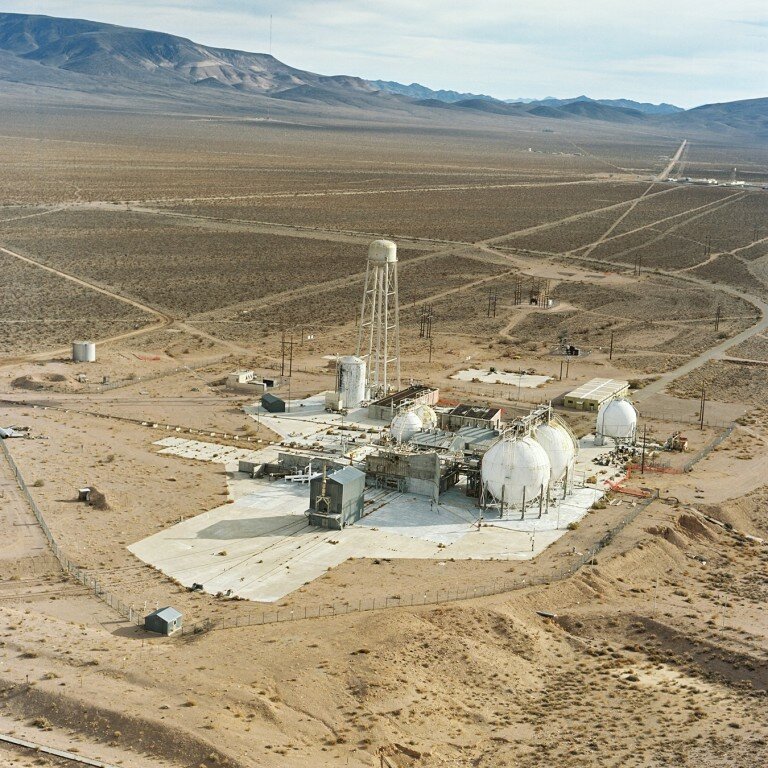
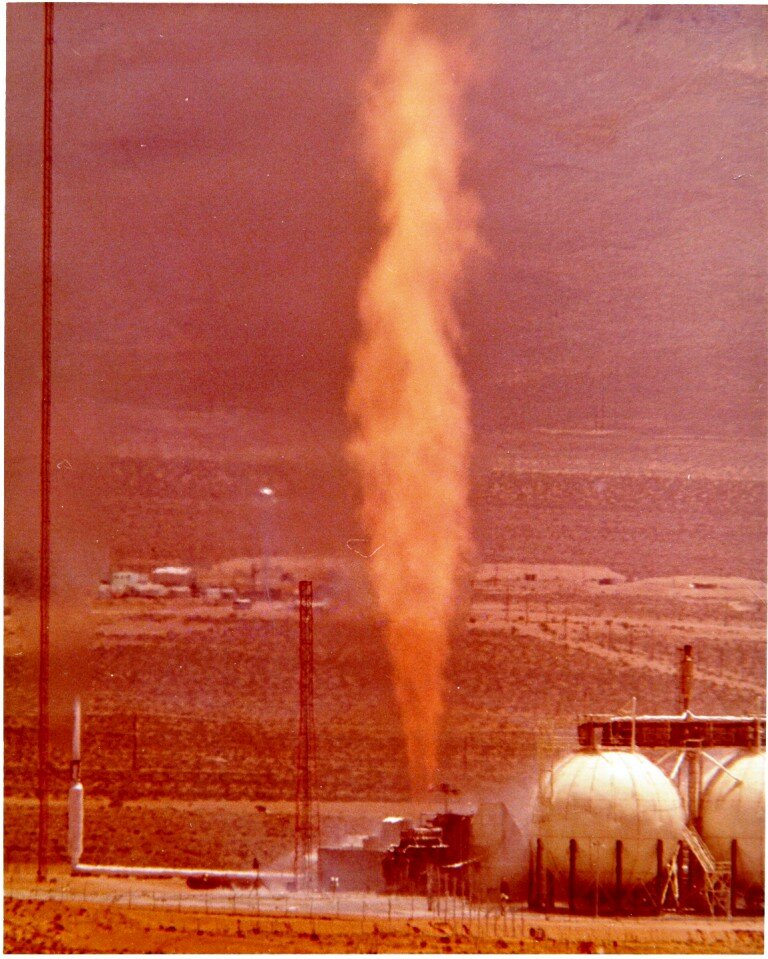
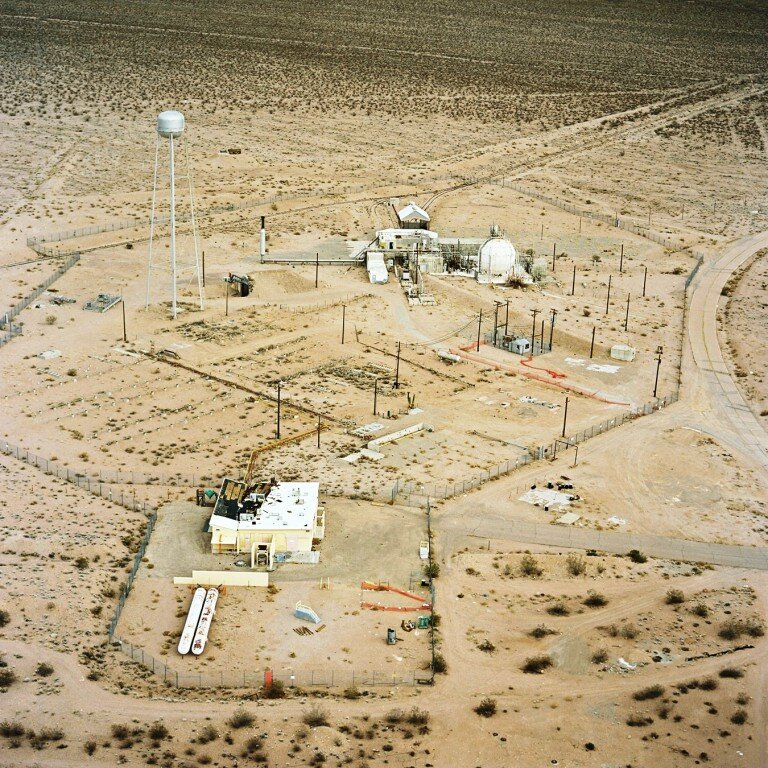
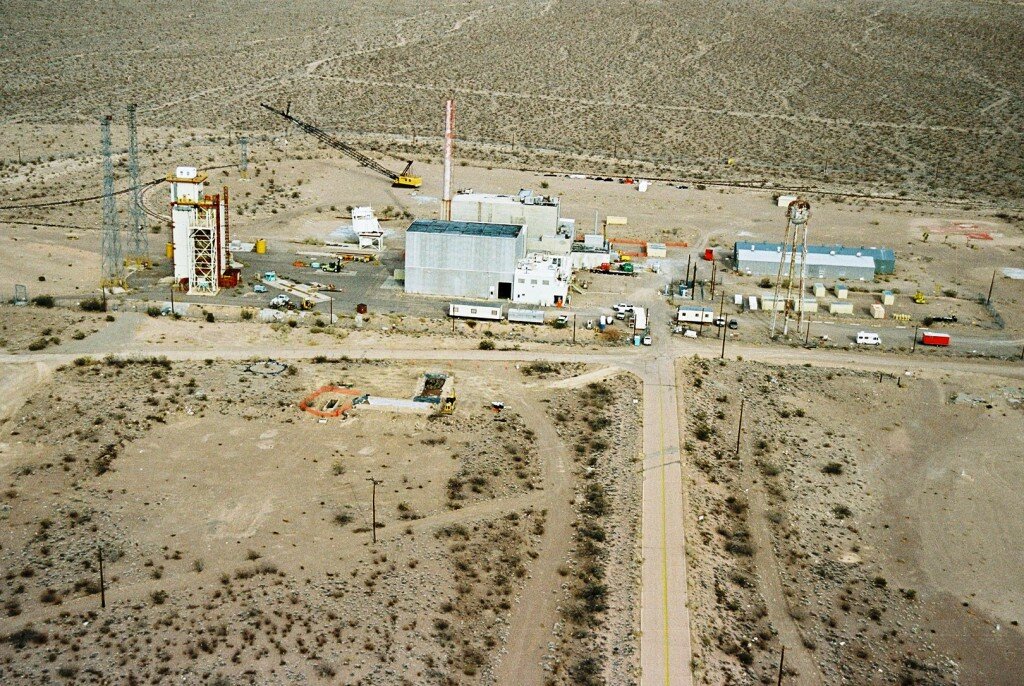
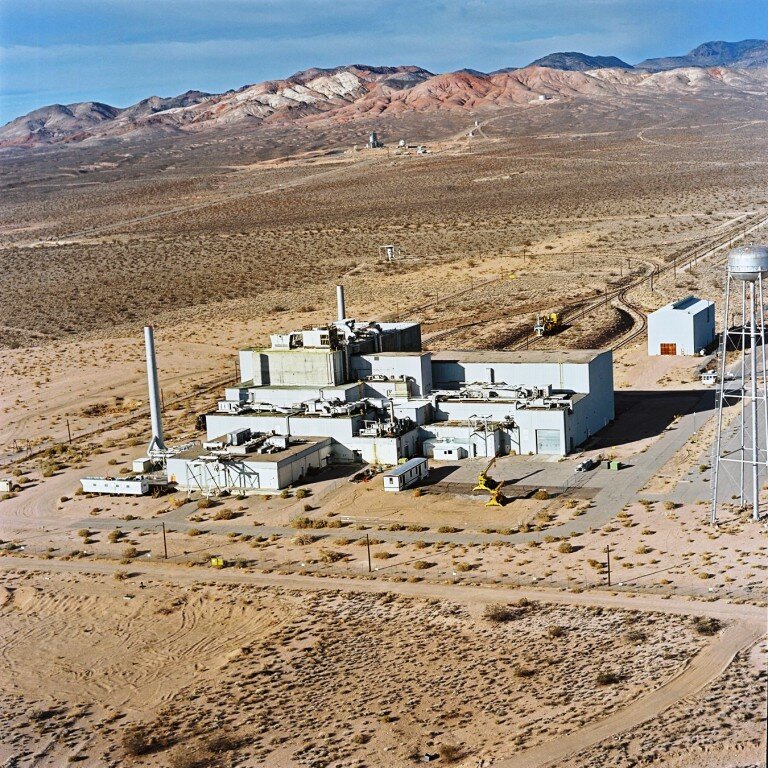
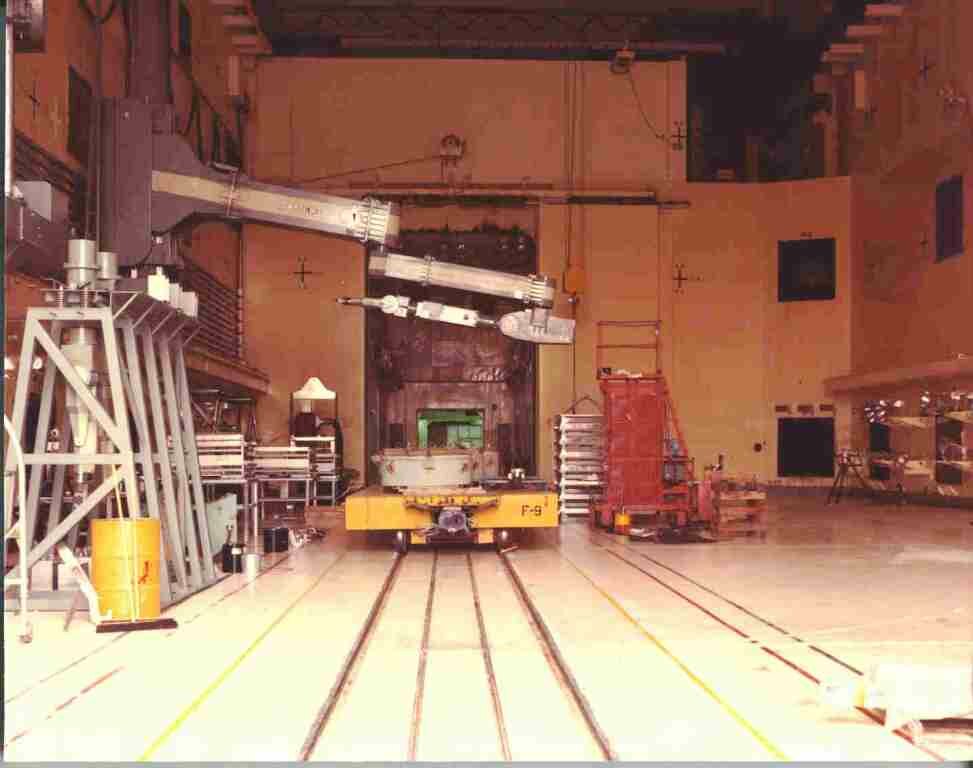
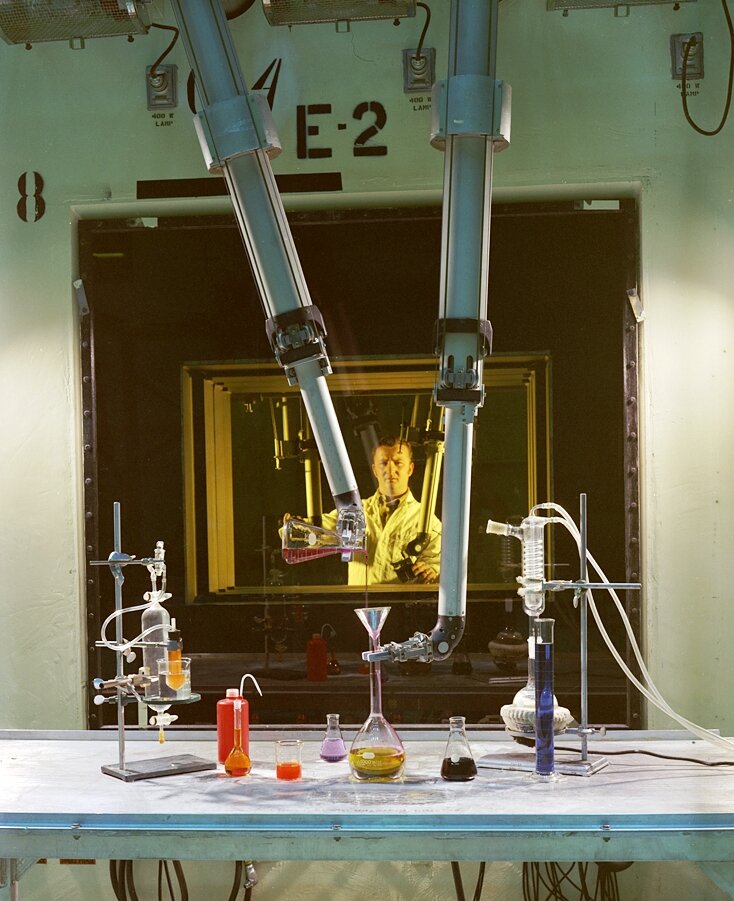
Underground entrance to offices, electronics, and control room of Engine Test Stand 1
“Photos courtesy of National Nuclear Security Administration / Nevada Site Office”
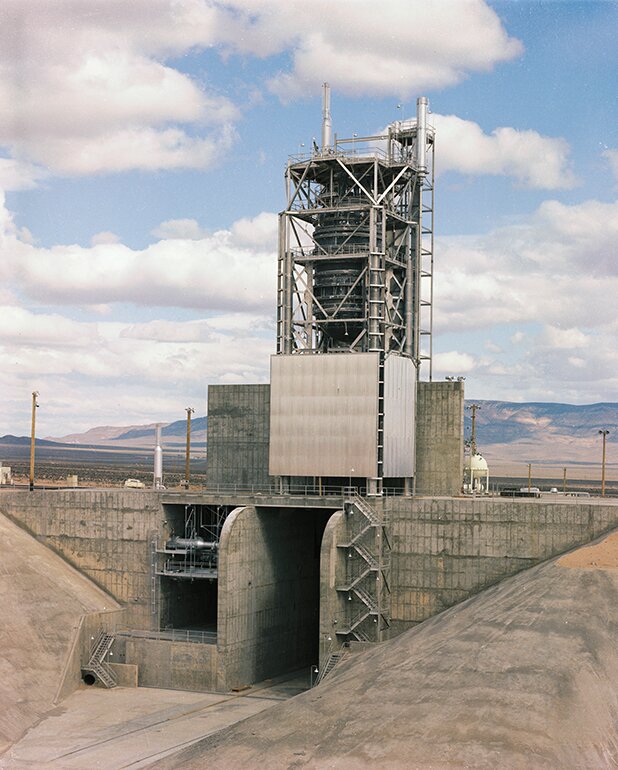
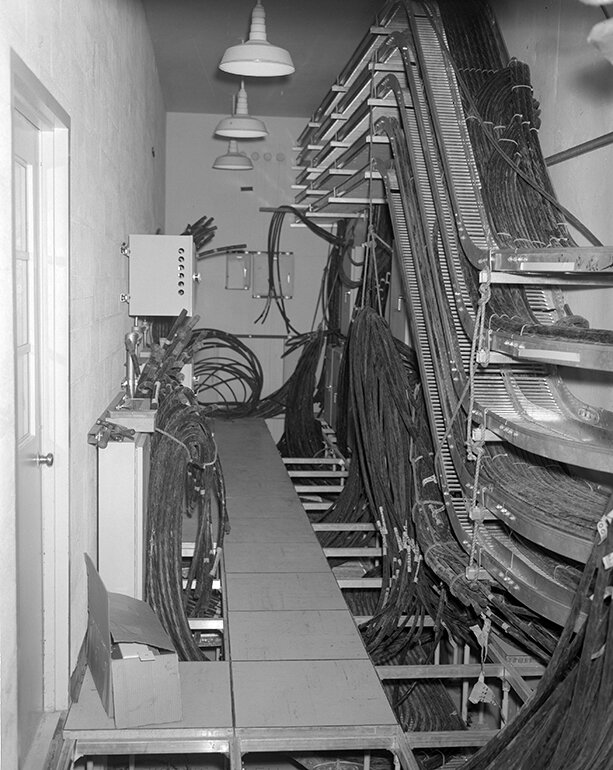
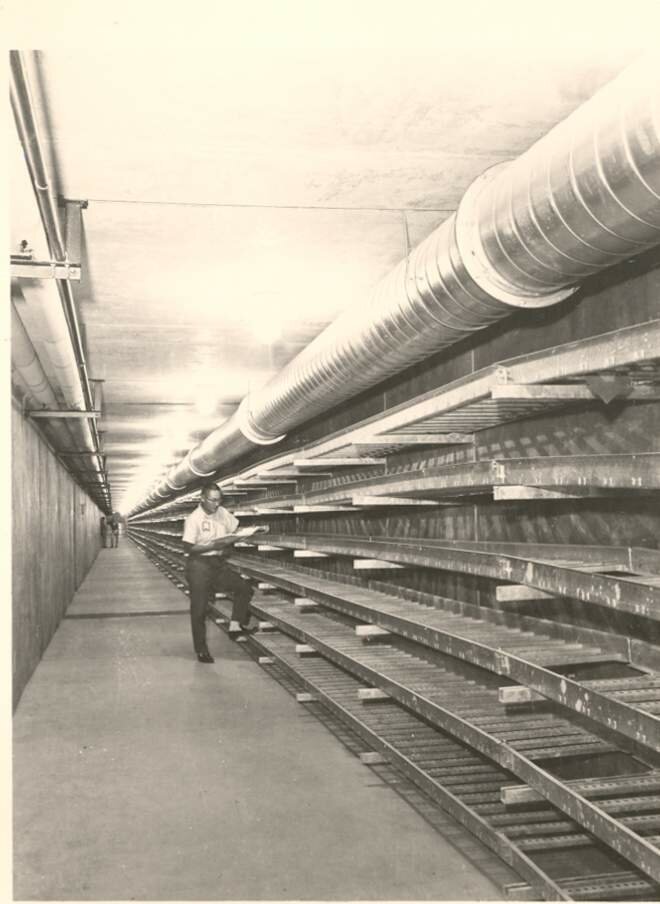
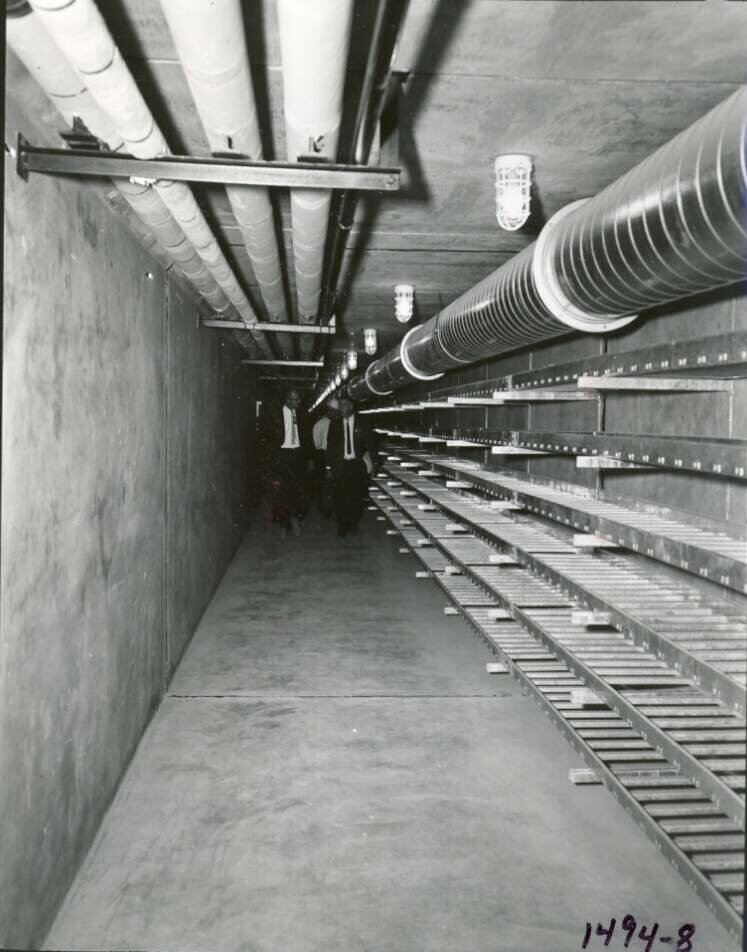
Links to More Information on this project
![]()
ATOMIC BOMB PROJECTS
Between projects, I participated in several atomic bomb tests at the neighboring Nevada Test Site while awaiting security clearance upgrade required for transfer to the Special Projects “black world” at Groom Lake. The atomic tests in which I participated were Marvel, Cobbler,, Gasbuggy, Cabriolet, and Torch underground detonations.
